If you haven’t noticed that terrazzo floors are having a moment, then that probably means you are not as obsessed about flooring as we are at Home Flooring Pros! Actually, it’s a source of much fascination to us here that this fantastically versatile flooring product ever went out of fashion.
In fact, it’s been around for ages – examples of terrazzo flooring have even been discovered in ancient Egyptian mosaics – and has been used for centuries across the globe. Its more modern incarnation is generally attributed to 18th century Venice, where it was used to decorate workers’ homes (a cheaper alternative to marble).
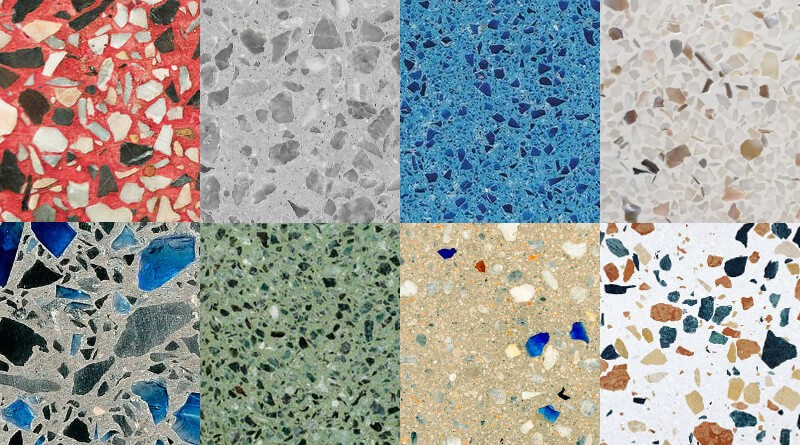
Terrazzo reached the height of its popularity in 20th century Europe, again due to its relative low cost, during the post-war reconstruction years of the 1920s/ 1930s and the 1950s through to the 1970s. The 1920s also saw useful advances in technology that brought better tools and production methods, making terrazzo flooring and terrazzo tile a popular choice in the USA too, where it was used to create upmarket Art Deco and Moderne designs.
But by the 1980s, home owners were much more affluent and had access to more choice; terrazzo lost its popularity as carpeting, hardwood and porcelain tile took precedence. Terrazzo flooring then became most commonly used for commercial and institutional spaces, where you’re still most likely to see it in abundance today.
However, in the past few years, designers are beginning to see the potential of terrazzo as a viable alternative to cold stone floors and busy tiles, an alternative that nevertheless has the same streamlined minimalism of concrete, but with added texture and interest in its profile; plus, the added advantage of being available in a myriad of colors!
 Source: www.contentarchitecture.com
Source: www.contentarchitecture.com
Slick, streamlined but with added texture – terrazzo is a great backdrop for contemporary, minimalist spaces.
So if you’re into sleek, unfussy but interesting flooring, then terrazzo might just be the flooring you’re looking for.
What is Terrazzo?
So, we know it’s pretty cool, but what is terrazzo flooring actually?
- Terrazzo is a composite construction material made by combining chips of aggregates such as marble or stone with either concrete or epoxy-resin.
- Depending on the types of materials used, terrazzo can be used both indoors and outdoors.
- Terrazzo is either poured (like concrete) in situ (i.e. in your home) or you can use terrazzo tiles instead.
Note: There is a style of encaustic cement tile called Granito, that is made using a similar technique as terrazzo, and which is often, therefore, referred to as terrazzo tile.
 Source: www.granito-tiles.com
Source: www.granito-tiles.com
Terrazzo tiles are also available, either in mono-color blocs, or like these encaustic cement versions, also known as Granito.
Different Terrazzo Options: Type and Installation
There are several different options when considering terrazzo. The concrete or epoxy binding material can be pigmented, allowing for a limitless range of color options, and other interesting aggregates can be used such as chips of glass, metal, mother of pearl or abalone shells.
Also, contemporary terrazzo designers are now pushing the boundaries of which aggregates can be used, and indeed creating terrazzo flooring that feature extra large chips or chards of aggregate mixed in to great effect – ideal if you are looking to create a truly bold statement floor.
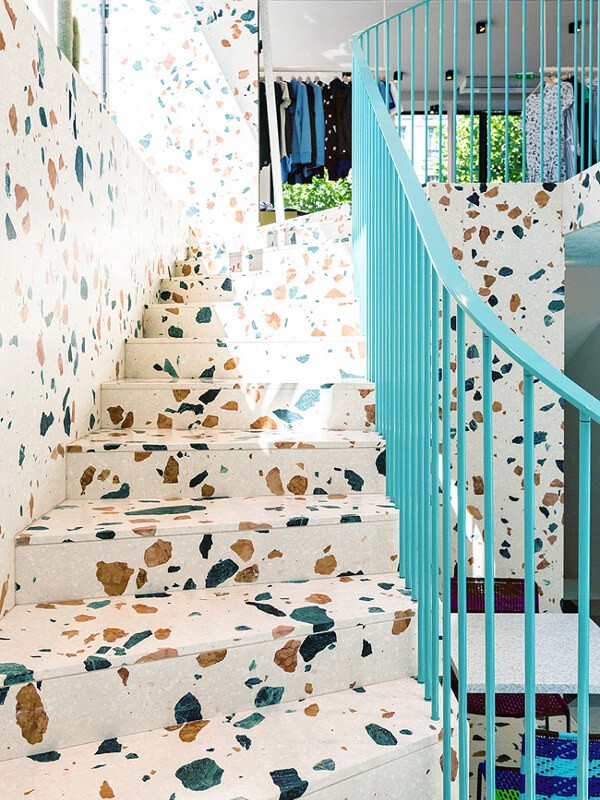 Source: www.blueberryhome.fr
Source: www.blueberryhome.fr
An example of a very bold custom-made terrazzo with extra large aggregate chips.
The terrazzo mix can then be set into tiles or panels or poured in situ (it can also be set into molds to create custom-built installations such as outdoor furniture, bathtubs or kitchen countertops).
When terrazzo is poured in situ onto large areas of floor, metal expansion or divider strips are used to delineate the floor into sections to avoid cracking (the strips are laid in the parts of the floor that are most likely to crack, which should force the crack to happen along the join rather than in the center of the section). If you want to create a terrazzo floor with different colors, then divider strips are also used to define the different colored sections.
Whether you choose to do an in situ pour of terrazzo or opt for pre-made terrazzo floor tiles, a professional installer will usually finish the entire floor by sanding it, then polishing and sealing it, thus creating a seamless floor (even with the tile option, the grout between tiles will be completely level with the terrazzo tiles).
 Source: makdesignbuild.com
Source: makdesignbuild.com
In this image you can see the metal expansion strips – in a color that compliments this lovely, golden taupe terrazzo pigment – that help prevent cracking.
Terrazzo Installation Methods
Terrazzo installation on your home is definitely NOT a DIY option, particularly if you are looking to pour the terrazzo in situ. You will need to consult and work with an experienced installation team to get the best results. Competent installers will be aware of the different installation methods and be able to advise you on the best one for your project.
Here is a brief overview of the three main in situ pouring methods:
- Thinset Terrazzo: this is a layer of epoxy-resin terrazzo, about 3/8 thick, poured over a concrete substrate. It is the lightest type of terrazzo in weight and can be installed over existing concrete or a plywood subfloor; it has the greatest range of color choices and is least likely to crack (because the epoxy resin increases flexibility). However, it can only be used indoors as the top layer can peel away if exposed to too much light. Also note that the solvents used in the epoxy can cause allergic reactions for some people.
- Sand-Cushion Terrazzo: this is a more traditional method for terrazzo where an initial cement base is laid, then a layer of sand applied before pouring a cement based terrazzo mix on top. The sand layer allows for some movement, minimizing the potential for cracks; however, this method create a very heavy and thick floor, and is only suitable for new builds as you have to incorporate the concrete base during construction. This method is also only for interior floors.
 Source: www.finne.com
Source: www.finne.com
Thinset terrazzo is the most popular type of method for remodeling interiors as it is the best suited to interiors and different subfloors.
- Monolithic Terrazzo: here a cement based terrazzo is poured straight onto a concrete subfloor. This method can be used for both interior and exterior applications, and on top of existing concrete subfloors – provided they are level and in good repair. However, this method is not the best for dealing with potential cracking – especially for above grade installation – mostly ideal for single-storey, ground floor buildings.
Other in situ poured terrazzo methods include Bonded terrazzo, which is similar to the sand cushion terrazzo, Polyacrylate terrazzo which is a useful alternative method in situations where epoxy based terrazzo will not adhere, and Rustic terrazzo which is used primarily for exterior situations where a more rugged surface texture is required.
- Terrazzo Tile Flooring: finally, using terrazzo tiles is another way to install terrazzo in your home. installation involves applying an adhesive and grout system, much like ceramic or porcelain tiles. Specialist installers can apply a sanded and sealed finish to create a seamless look similar to poured terrazzo.
Pros & Cons of Terrazzo Flooring
Once you’ve taken into consideration the best installation method to deal with your project, there are a number of other pros and cons to consider with terrazzo flooring.
The main advantages of terrazzo flooring are:
- Aesthetic appeal: terrazzo flooring is a great alternative to plain concrete flooring, as you get the same slick, quasi-industrial style but with added texture and interest that is more like a carpet – think of terrazzo as a concrete carpet, if you like! The point is, that if you like the minimal, or industrial look, but want to soften the hard edges, terrazzo is good for that.
- Cutting edge cool: terrazzo is only just coming up again as a cool flooring material, so if see yourself as a trend-setter, terrazzo may be for you.
- Infinitely customizable: terrazzo comes in a limitless range of colors, with a breadth of aggregate options and is easy to pour into custom designs, meaning you can create a really unique floor.
- Versaility: not only can you pour terrazzo into custom designs, but it can also be molded into panels for staircases, or into custom shapes such as bathtubs, sink, countertops and stone-like furniture.
- Underfloor heating friendly: terrazzo is a great choice in combination with radiant or hydronic underfloor heating systems, as it is very good at retaining heat.
- Healthy: properly sealed terrazzo is non-porous and resistant to microbes and mold, making it a very safe flooring surface.
- Easy maintenance: For me the ultimate advantage of terrazzo – you barely need to do anything other than sweep and mop from time to time.
- Environmentally-friendly: many terrazzo manufacturers use recycled materials to create the aggregate, particularly recycled glass, porcelain and metals.
- Durable: there’s a reason terrazzo is used so much in commercial and institutional buildings – it’s very, very durable. (The family of one of our Home Flooring Pros is from Greece and the terrazzo laid in her grandmother’s house is over 60 years ago still looks great!)
 Source: jhphoto.com
Source: jhphoto.com
Terrazzo is a very durable and easily customized flooring, which is why it is often used in commercial type spaces, like the headquarters of Mane Inc. shown above.
The main disadvantages of terrazzo flooring are:
- Beware of trends: terrazzo may be “having a moment” right now in designer homes everywhere, but is this a trend that is going to last? Or is it a look that is just that bit too distinct? Not everyone will like this type of flooring, so I would steer clear of terrazzo if you are doing a fixer-upper for resale. Also, as contemporary terrazzo has a definite, minimalist vibe to it, be sure that you have the interior décor to match.
- Cracks: structurally, the main concern with terrazzo is that it can crack if not properly installed. Cracks can be dealt with, but not easily and not cheaply! Make sure you choose a pro installer and the right method for your project.
- Cold and hard: if you don’t have underfloor heating, you may find that terrazzo flooring is pretty cold to walk on in winter; and as well as cold, some people don’t care for the hardness underfoot that is inherent in a terrazzo floor.
- Costs: terrazzo flooring is generally speaking not a cheap option (see below).
 Source: www.mrmitchell.com.au
Source: www.mrmitchell.com.au
With terrazzo you also have the rather cool possibility of creating matching staircases for seamless flooring design.
Terrazzo Floor Cost
Terrazzo flooring material costs will range dramatically depending on what kind of aggregate you want – simple stone aggregates are fairly inexpensive, but if you want to add huge quartz or marble chips it’s going to be quite costly.
Materials aside, you will definitely need to have a professional installation team, and may have to have pre-installation prep work done to the subfloor to achieve the best results. Expect to pay between $20 to $100 per square foot for in situ poured terrazzo floor installation. Terrazzo tile cost is potentially a cheaper option, at around $15 to $30 per square foot.
Where can you buy Terrazzo? Best Terrazzo Brands
Unlike hardwood, porcelain tiles or other standard flooring products, there aren’t any specific terrazzo brands. Instead there are many professional terrazzo flooring manufacturers/ installation contractors established across the USA, most of whom offer a full range of the most common terrazzo options. A good place to start your search for a contractor is the National Terrazzo & Mosaic Association website.
You may have to be more determined – and have a comfortable budget – if you want to seek out the more specialist terrazzo options, such as terrazzo with extra large marble shards.
For terrazzo floor tiles, the following manufacturers have representatives and retails points nationwide:
Trend Terrazzo have some gorgeously bold colored terrazzo tiles in their Trend Q/ Origina collection.
Nurazzo who have an incredible range of options and colors, plus custom options too.
Fritztile also have a large range, but we particularly love their Vibrant Pearl Collection that features natural mother of pearl aggregate.
Mariotti USA is the sole US distributor of Mariotti’s classic line of Italian terrazzo tile manufactured just outside of Milan, Italy.
As for Granito terrazzo tiles have a look at the pretty Pacifico collection available at the Cement Tile Shop who have showrooms in Tampa and Scottsdale, as well as shipping options covering the whole of the USA and Europe.
And there are also some top international designers such UK-based Lindsey Laing who specializes in modern granito tiles and who will organize shipments to the US. Another company, Mosaic del Sur, who also have showrooms in the UK and Europe, offer more traditional-style Granito tiles.
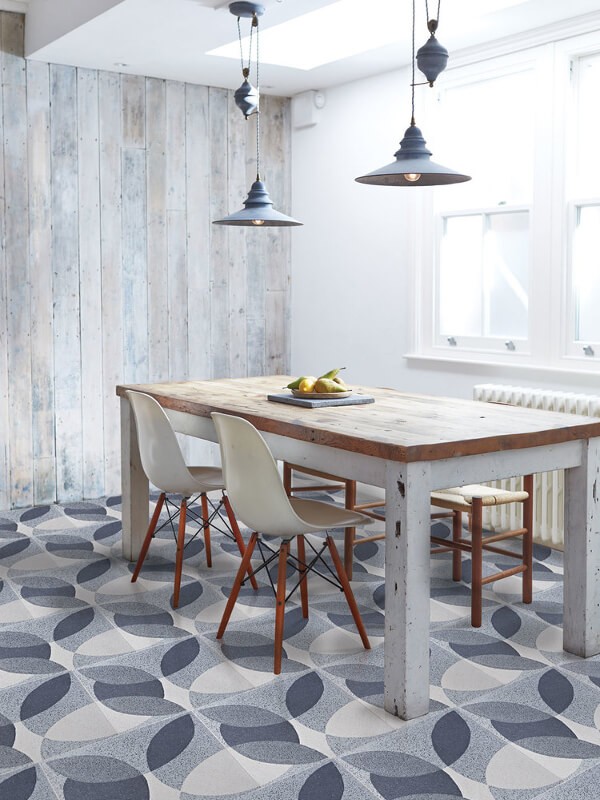 Source: lindseylang.co.uk
Source: lindseylang.co.uk
Contemporary designer Lindsey Laing is bringing modern designs to the ancient craft of Granito terrazzo tiles.
Terrazzo Design Styles and Ideas: How to decorate with Terrazzo Flooring
We’ve mentioned a few times now that contemporary terrazzo goes rather well with sleek, minimalist or semi-industrialist décor styles, and the images you’ll have seen so far in the article are good examples of that.
Here are some more inspirational terrazzo flooring ideas:
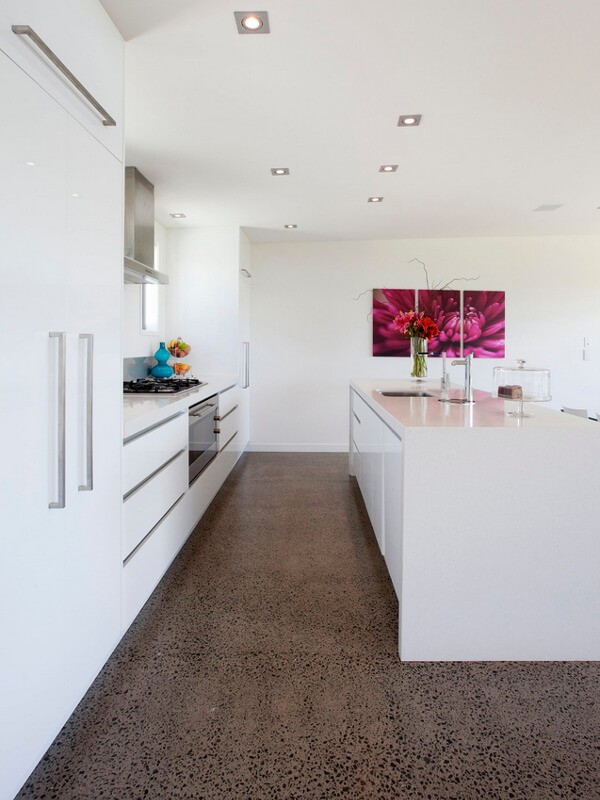 Source: www.creativespace.co.nz
Source: www.creativespace.co.nz
Terrazzo flooring in a residential setting is definitely making a statement, and choosing décor that allows the terrazzo to take center stage is one way to go: clean lines, and simple color schemes will allow your terrazzo floor to be the star.
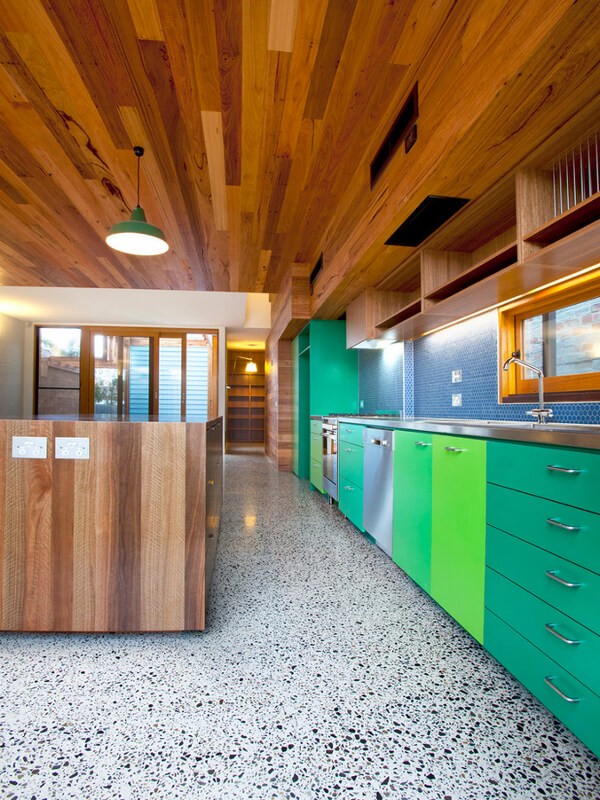 Source: windowsdoorsmelbourne.com.au
Source: windowsdoorsmelbourne.com.au
The different contemporary shapes, textures and colors in this kitchen might not be to everyone’s taste – but it is still quite striking.
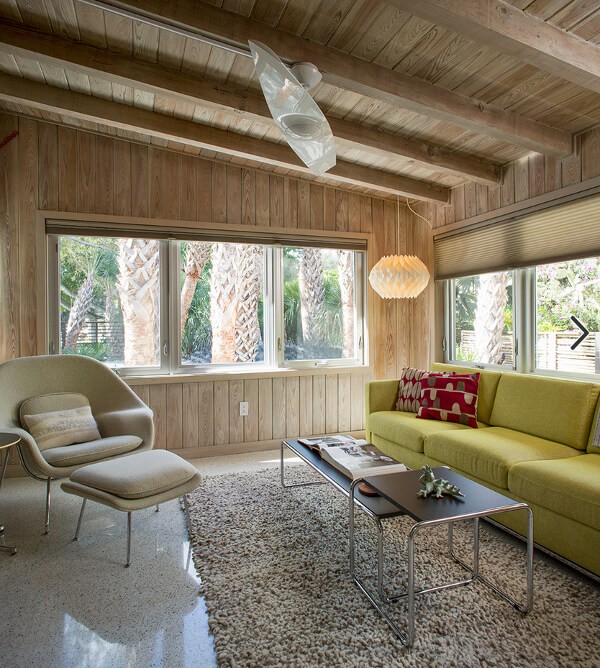 Source: www.dynanconstruction.com
Source: www.dynanconstruction.com
Neutral terrazzo flooring paired with Scandinavian or Mid-Century Modern inspired décor that highlights natural finishes such as wood furniture, natural fibers, exposed bricks, and shag rugs works very well.
 Source: dzekdzekdzek.com
Source: dzekdzekdzek.com
Opting for terrazzo with extra large aggregate chips or with bold pigmentation will create an even bigger statement.
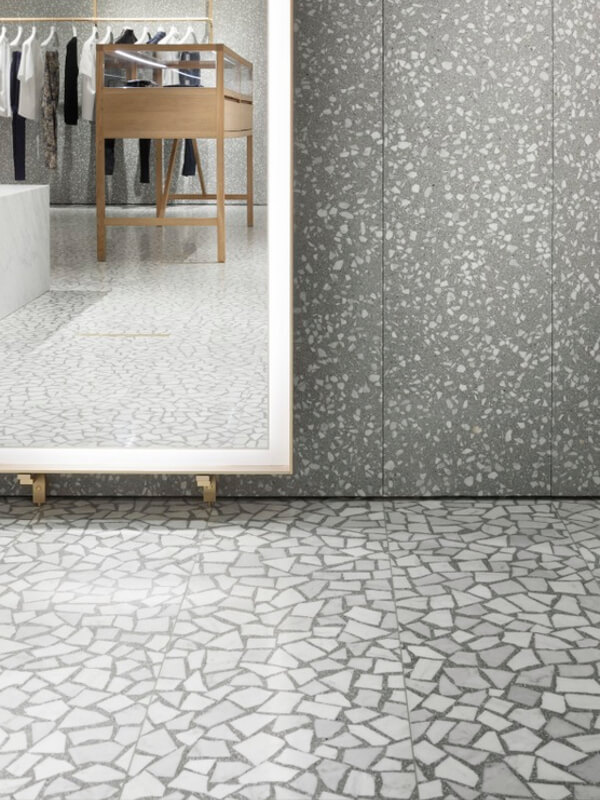 Source: davidchipperfield.com
Source: davidchipperfield.com
Matching different complimentary styles of terrazzo on the floor and the walls gives a very slick, contemporary look.
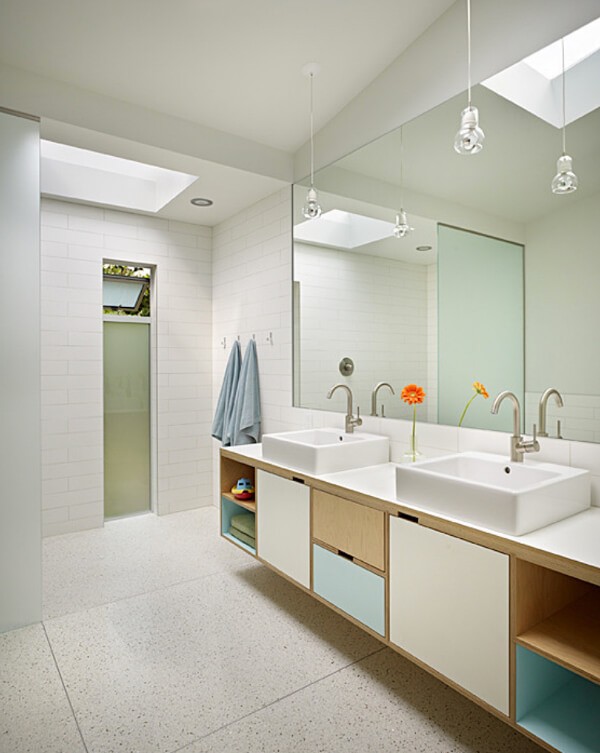 Source: ainsliedavis.com
Source: ainsliedavis.com
Reflecting the grid formation made by the expansion strips in your terrazzo floor by choosing boxy, grid-like cabinets and wall tiles will give a harmonized, well-considered look.
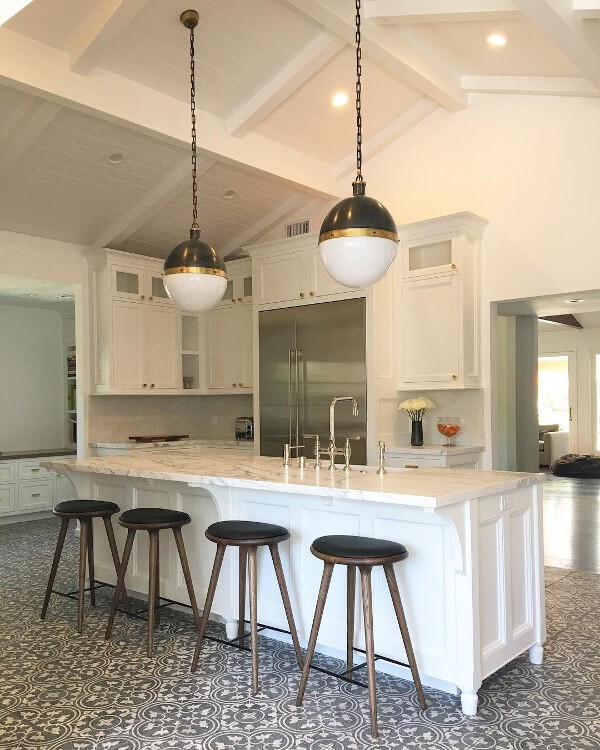 Source: www.cementtileshop.com
Source: www.cementtileshop.com
If you are looking for an even more textured and patterned floor, then opt for terrazzo style encaustic tiles – also known as Granito – which feature intrinsic, geometric patterns and are available in lots of vibrant colors.
The article or page: Terrazzo Flooring: Pros & Cons, Installation, Cost, Reviews & Ideas first appeared on the Home Flooring Pros website. Please update your links and bookmarks accordingly.
from Home Flooring Pros http://ift.tt/2siTxaY
No comments:
Post a Comment